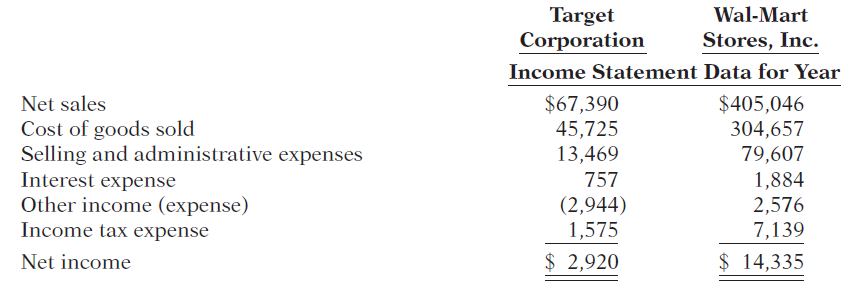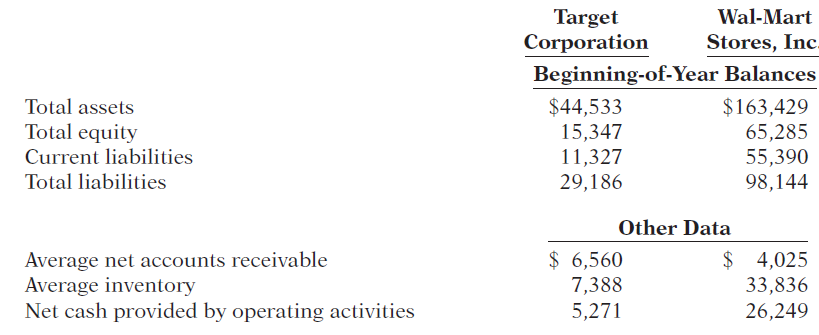Selected financial data of Target (USA) and Wal-Mart Stores, Inc. (USA) for a recent year are presented
Question:



Instructions
(a) For each company, compute the following ratios.
(1) Current.
(2) Accounts receivable turnover.
(3) Average collection period.
(4) Inventory turnover.
(5) Days in inventory.
(6) Profit margin.
(7) Asset turnover.
(8) Return on assets.
(9) Return on ordinary shareholders€™ equity.
(10) Debt to total assets.
(11) Times interest earned.
(b) Compare the liquidity, profitability, and solvency of the two companies.
Solvency means the ability of a business to fulfill its non-current financial liabilities. Often you have heard that the company X went insolvent, this means that the company X is no longer able to settle its noncurrent financial... Accounts Receivable
Accounts receivables are debts owed to your company, usually from sales on credit. Accounts receivable is business asset, the sum of the money owed to you by customers who haven’t paid.The standard procedure in business-to-business sales is that...
Fantastic news! We've Found the answer you've been seeking!
Step by Step Answer:
Related Book For 

Financial Accounting IFRS
ISBN: 978-1118285909
2nd edition
Authors: Jerry J. Weygandt, Paul D. Kimmel, Donald E. Kieso
Question Posted:





